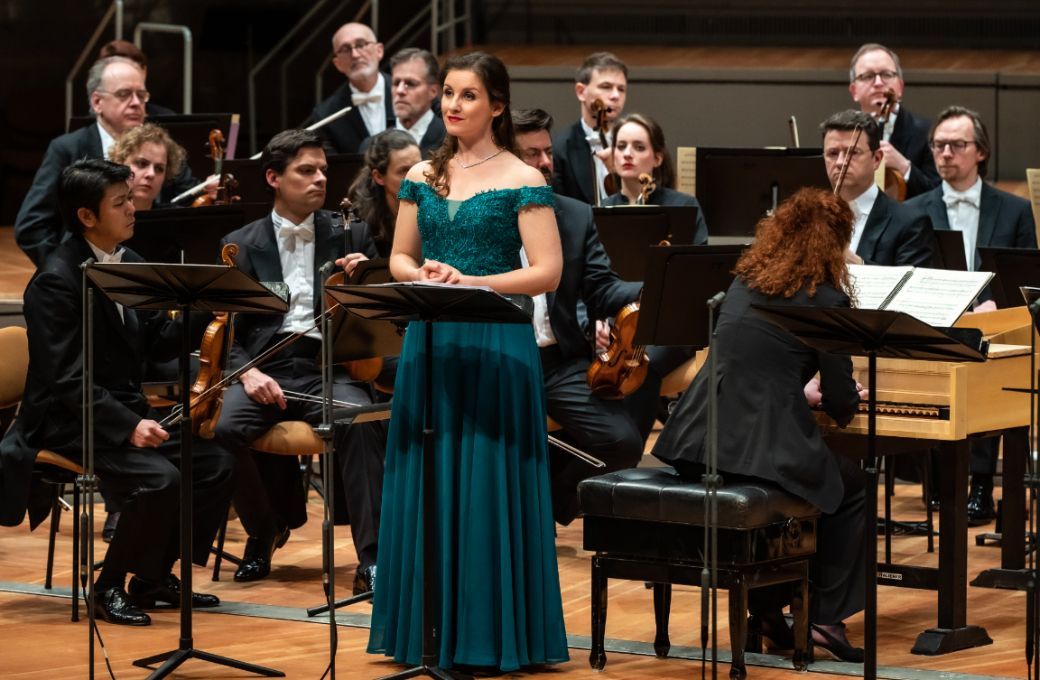The general agreement on music is that it holds great didactic potential – with the aid of the simple tune of a rhyme we memorise the number of days in each month, or the order of the planets in the Solar System, opening up for educational prospects that are as varied as our creativity allows. This much must have been clear to Cardinal Benedetto Pamphili, whose libretto for Handel’s very first oratorio, Il trionfo del Tempo e del Disinganno, is a large-scale attempt to convey an edifying message through music. Frequently revised by Handel throughout his life and serving as a hotbed of ideas for future works, the oratorio in its original version finally had its first-ever performance at Berlin’s Philharmonie conducted by Baroque specialist Emmanuelle Haïm, securing unanimous success.

A veritable 18th-century morality play, Il trionfo pivots on the battle for dominance between two conflicting parties: on one side is carefree Pleasure, on the other are grim Disillusion and despotic Time. Between them lies Beauty, whose initial hedonism is gradually tempered and eventually overthrown by the pressing arguments of Time and Disillusion – hence their triumph. Hardly a heartening tale, its overly cautionary quality and rather static pace make the text somewhat challenging for modern audiences. And yet, Handel’s score comes to the rescue, sustained in this case by Haïm’s perspicacious, inspired interpretation and four talented, well-assorted soloists.
Standing to lead the Berliner Philharmoniker or sitting at the harpsichord, Haïm was arguably the major catalyst of the evening. Little needs to be said about Handel’s melodic vein, which translates into a vast assortment of diversely toned arias. The French conductor not only grasped, but highlighted such variety with optimal choices of tempi, trusting the musicians to follow her accordingly. And follow they did, adapting to the frequent changes of pace and dynamics. Meticulous attention to dynamics spanned from the fortissimo of the opening chords of Tempo’s aria “Urne voi” to the pianissimo of the very last bars, where only the first violin is left to play. In the concerto-like alternation between solo and tutti, single instruments had numerous occasions to stand out and converse with each other, with special praise to concertmaster Daishin Kashimoto, cellist Martin Löhr, and oboist Jonathan Kelly. In general, Haïm found a dramatic impetus that sailed through the succession of recitatives and arias as if with a benign tailwind.
Caught in a relentless confrontation, the four soloists took turns to embody the personified concepts of Pamphili’s libretto, not malleable but fixed in their immutable nature. The only exception being Bellezza, whose change of mind constitutes the core of the oratorio, all roles are defined by an unwavering distinctive trait – and a rather distinctive musical identity. At first, Elsa Benoit’s smooth, collected soprano gave a warmer edge to Bellezza’s coquettish temper; but as her character began to hesitate and mature, her clear singing took on a more melancholic, pensive tone. Thanks to her firm breath control, Julia Lezhneva sported impressive coloratura in her portrayal of Piacere, particularly memorable in the vocal pyrotechnics of “Un pensiero nemico di pace”. But her pianissimi also brought great emotionality to the role, such as in the familiar “Lascia la spina”. Her spiritual and musical nemesis, Iestyn Davies’ portrayal of Disinganno centred on a sombre, calm lyricism, relying on steady technique and creating an intimate, mournful atmosphere around the character. Finally, Anicio Zorzi Giustiniani defined the imperious disposition of Tempo with his well-projected, full-bodied tenor.
This review has been updated to credit the correct oboist.


